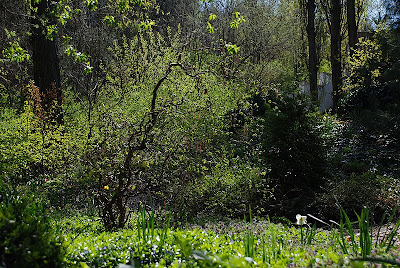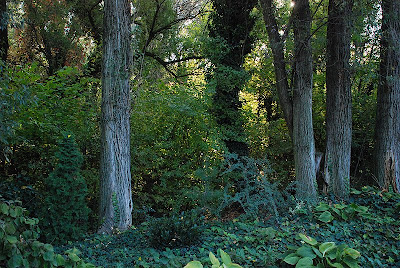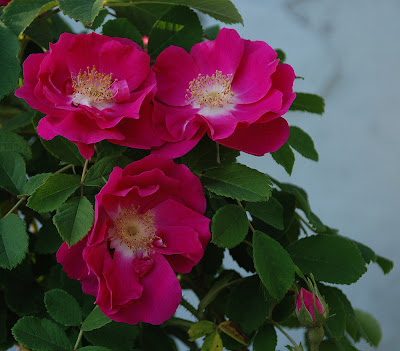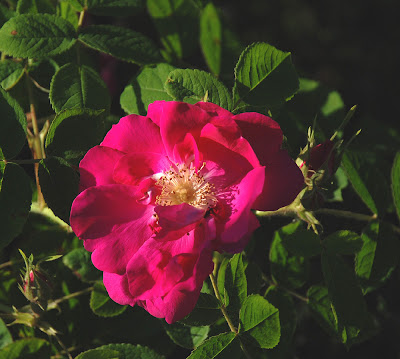This is how the Germans call those wild or semi-wild fruits that are also cultivated in home gardens. They usually do not require any pruning (or just very little). They are usually very resistent. They require no spraying. They often resist in extreme conditions. Many of them produce fruits just as tasty as the well-known ones, and many of them offer food for the animals living in the garden. And, in top of all that, most of them assume wonderful colors in the autumn. And they are available on a very large scale.

I started to look for them when our efforts to produce fruits failed in our cool and shady garden, right at the edge of the forest, in spite of all our ambitions. We have planted every possible kind of fruits, selecting complete sequences of breeds. We pruned, we sprayed, we manured, we irrigated, but after seven or eight years we had to realize that it does not go. The trees – except for the nedlar and some berries – hardly produced any fruits, and a number of them simply died out in spite of all our care.
Between 2004-2005 I decided that if an orchard is not sustainable then it should be converted into a decorative garden. True, Tamás told that the two are not mutually exclusive, but I dogmatically proclaimed that no fruit trees and shrubs fit in a decorative garden. Therefore, apart from the medlar – and the three peaches, champions of survival – I digged out all the rest. (Fortunately most trees were so stunted that I could give them to the neighbors.)

However, the concept of the decorative garden did not result unproblematic, either. On the one hand I had problems to find plants fitting for the bad soil, the dry places and the part-shadow that makes the greater part of the garden. On the other hand I missed very much that wonderful “red jam” I used to produce of blackcurrant, raspberry and other berries. So I revised my aesthetic principles and immediately found some place fitting for berries. And while I was looking for plants for dry part-shadow, I met the alternative fruits.

By now I have collected a complete set of them. And as most of them are originally forest plants, therefore they fit very well in our natural garden.
More on them in Hungarian:
Erdeigyümölcs-lap.
Some German pages for the interested:
Gärtenrei Naturwuchs.
Artener Bio-Baumschulbetrieb.
Eggert Baumschulen.
 The flowers from left to right: stinking hellebore (Helleborus foetidus), tulips, daffodils, bleeding heart or Venus’s car (Dicentra spectabilis 'Alba') two sports of spurge (below Euphorbia polychroma, above Euphorbia palustris), Bergenia, Siberian Bugloss (Brunnera macrophylla), more tulips and spurge.
The flowers from left to right: stinking hellebore (Helleborus foetidus), tulips, daffodils, bleeding heart or Venus’s car (Dicentra spectabilis 'Alba') two sports of spurge (below Euphorbia polychroma, above Euphorbia palustris), Bergenia, Siberian Bugloss (Brunnera macrophylla), more tulips and spurge. The flowers from left to right: stinking hellebore (Helleborus foetidus), tulips, daffodils, bleeding heart or Venus’s car (Dicentra spectabilis 'Alba') two sports of spurge (below Euphorbia polychroma, above Euphorbia palustris), Bergenia, Siberian Bugloss (Brunnera macrophylla), more tulips and spurge.
The flowers from left to right: stinking hellebore (Helleborus foetidus), tulips, daffodils, bleeding heart or Venus’s car (Dicentra spectabilis 'Alba') two sports of spurge (below Euphorbia polychroma, above Euphorbia palustris), Bergenia, Siberian Bugloss (Brunnera macrophylla), more tulips and spurge.

























